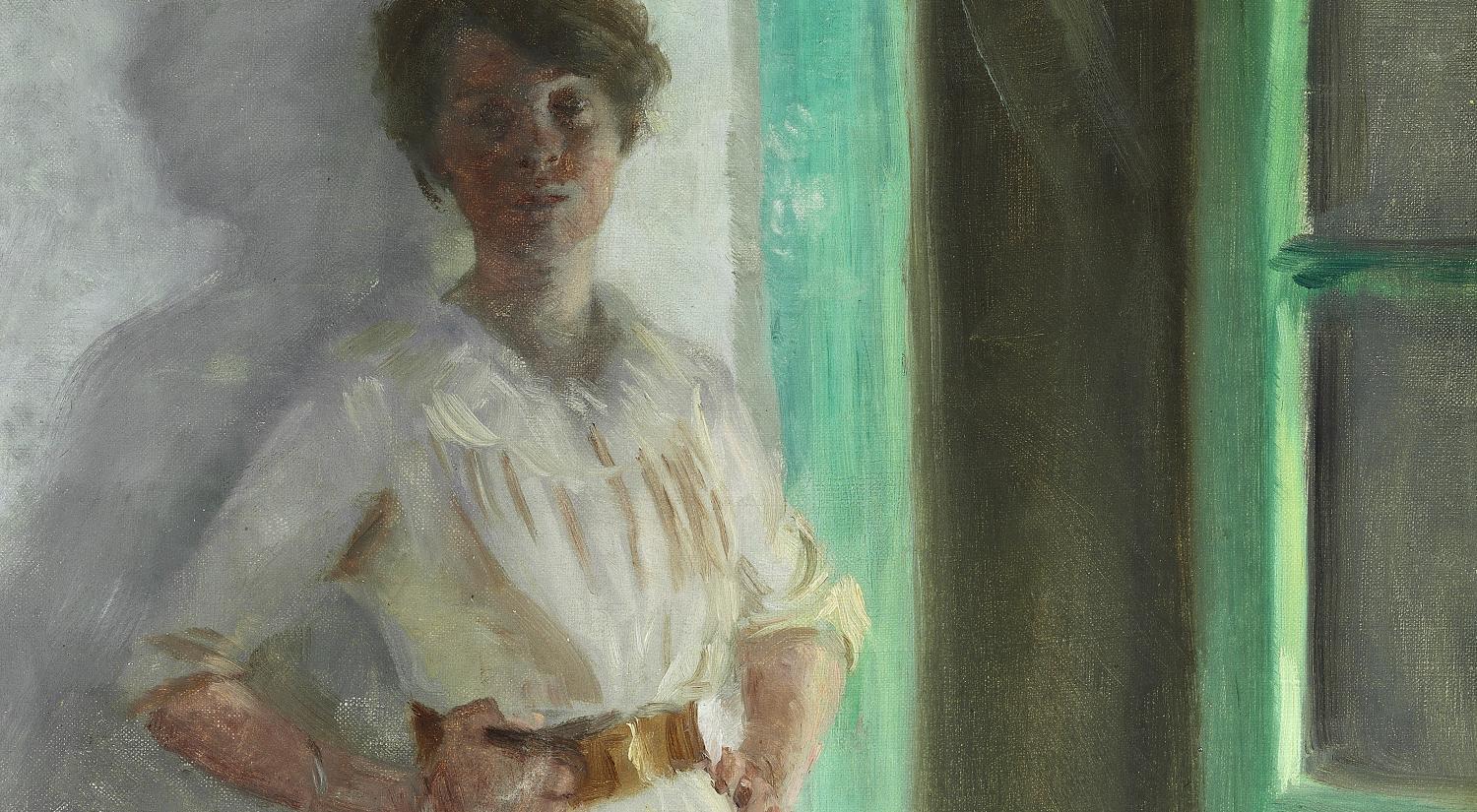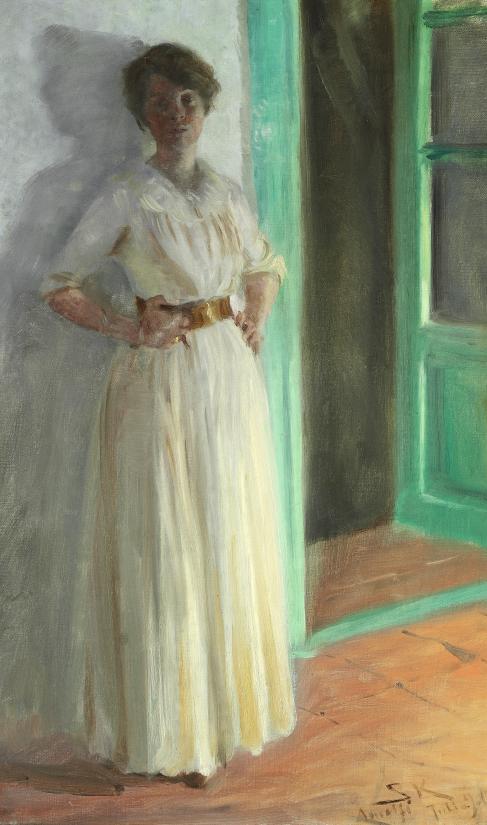Peder Severin Krøyer and Marie Krøyer married in 1889. Their honeymoon, which took them through Germany to Florence, Rome, Naples and Amalfi, is one of the most artistically productive sojourns in P. S. Krøyer’s career. It resulted in several works of art, including this portrait of his wife, Marie. Now, the painting can be seen at the Hirschsprung Collection where it complements the museum’s other Krøyer paintings from the same journey.
Marie in shades of white
Marie Krøyer is depicted leaning against the wall in a light, summery dress. With her hands resting on her hips she assumes a seemingly relaxed but also confident pose. The artist’s main focus of attention is on the crisp white fabric, which the evening sunlight brings out in a rich variation of whites. The shimmering range of whites is further highlighted by the almost fluorescent verdigris of the door and doorjamb and by Marie’s face, which is in shadow.
Marie stands on the patio of the hotel on the Amalfi coast where the newlyweds stayed during their visit. The Hirschsprung Collection contains other pictures that P. S. Krøyer painted from the same patio: Bugten ved Amalfi. Udsigt fra Albergo della Luna (The Bay at Amalfi. View from Albergo della Luna), 1890 and Fiskerbåde ved Amalfi (Fishing boats off Amalfi), 1890. Unlike these two paintings, the subject matter of the newly acquired piece is Krøyer’s wife, Marie.
An important element in the story
‘The painting of Marie Krøyer is an important element in the story about the artistic subject matter that would come to define P. S. Krøyer’s work following his engagement and marriage, and which posterity came to regard virtually as the essence of his renown – the paintings of his wife, Marie Krøyer. The museum already owns the pastel study, and with the acquisition of the oil painting, the two works of art now form a beautiful unity,’ says Gertrud Oelsner, director of the Hirschsprung Collection.
P. S. Krøyer is richly represented in the Hirschsprung Collection, which has the second-largest collection of his works of any museum, surpassed only by the Art Museums of Skagen. He was one of the artists who enjoyed the patronage of the museum’s founder, Heinrich Hirschsprung. At an early time in Krøyer’s career Hirschsprung purchased some of his works, thus securing Krøyer the economic means to undertake the many journeys that preceded his artistic breakthrough.
The painting was acquired with support from the New Carlsberg Foundation, the Danish Agency of Culture and Palaces and the private foundation Aage og Johanne Louis-Hansens Fond. It is already on display at the museum.




